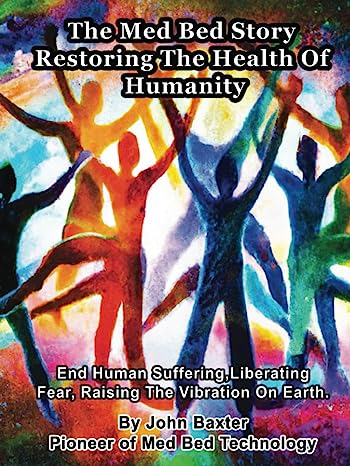The terms "earthing" and "grounding" are often used interchangeably in wellness discussions, but they can have distinct meanings depending on the context. As more people explore these practices for their health benefits, it’s important to understand the differences and why some may consider grounding better than earthing. This article delves into the key distinctions between earthing and grounding, explaining their purposes, benefits, and how to incorporate them into your wellness routine.
Understanding Earthing
Earthing, at its core, refers to the practice of making direct physical contact with the Earth’s surface. This typically involves activities like walking barefoot on grass, sand, or soil, or sitting directly on the ground. The concept behind earthing is based on the idea that the Earth’s surface is rich in free electrons, which can be absorbed by the human body, helping to neutralize free radicals and reduce inflammation.
Benefits of Earthing
- Natural Connection: Earthing provides a direct connection to the Earth, which is believed to offer numerous health benefits, including improved sleep, reduced stress, and enhanced mood.
- Accessible and Simple: Earthing is easy to practice and doesn’t require any special equipment. Simply spending time outdoors, barefoot or sitting on the ground, can help you reap the benefits.
Understanding Grounding
Grounding is a broader term that encompasses the use of products designed to replicate the effects of direct Earth contact indoors. While earthing specifically involves direct contact with the Earth, grounding can include the use of grounding mats, sheets, and other devices that connect you to the Earth’s energy even when you’re indoors.
Benefits of Grounding
- Versatility: Grounding allows you to experience the benefits of earthing even if you live in an urban environment or spend most of your time indoors. Grounding products can be used while sleeping, working, or relaxing at home.
- Advanced Technology: Grounding often involves the use of advanced materials and technology that enhance the connection to the Earth’s energy, providing consistent benefits regardless of your location.
Key Differences Between Earthing and Grounding
1. Method of Connection
- Earthing: Involves direct physical contact with the Earth’s surface. This is the traditional and most natural form of connecting to the Earth’s energy.
- Grounding: Can include earthing but also extends to using grounding products that replicate the Earth’s energy indoors, making it more versatile and accessible in various environments.
2. Accessibility
- Earthing: Requires access to natural surfaces like grass, sand, or soil. It may be difficult to practice in urban environments where natural spaces are limited or during colder months when outdoor activities are less feasible.
- Grounding: Can be practiced anywhere, thanks to grounding products that connect you to the Earth’s energy indoors. This makes grounding a more accessible option for people living in cities or those with limited mobility.
3. Consistency
- Earthing: The benefits of earthing depend on how frequently you can connect with the Earth’s surface. Inconsistent practice may lead to less noticeable benefits.
- Grounding: Grounding products provide a consistent connection to the Earth’s energy, even during sleep or indoor activities, which may lead to more consistent health benefits.
Why Grounding Is Often Considered Better Than Earthing
1. Year-Round Benefits
- Indoor Accessibility: Grounding can be practiced year-round, regardless of weather conditions or access to outdoor spaces. This makes it a more practical option for people living in areas with harsh climates or those who spend most of their time indoors.
2. Enhanced Health Benefits
- Technological Advancements: Grounding products often incorporate advanced materials that enhance the connection to the Earth’s energy. This can lead to more potent benefits, such as improved sleep, reduced discomfort.
- Comprehensive Wellness: By integrating grounding into your daily routine with the help of grounding products, you can enjoy the benefits more consistently, leading to improved overall wellness.
3. Versatility in Practice
- Multiple Applications: Grounding can be easily incorporated into various aspects of daily life. Whether you’re working at your desk, sleeping, or relaxing, grounding products allow you to stay connected to the Earth’s energy without the need to be outdoors.
How to Incorporate Grounding into Your Life
Grounding is simple to incorporate into your daily routine, and with the availability of grounding products, it’s easier than ever to stay connected to the Earth’s energy.
1. Use Grounding Mats and Sheets
- At Work: Place a grounding mat under your desk or chair to stay grounded while working. This can help reduce stress and improve focus.
- While Sleeping: Grounding sheets can be used on your bed to ensure you stay connected to the Earth’s energy throughout the night, promoting better sleep and recovery.
2. Wear Grounding Footwear
- On the Go: Grounding shoes or sandals are designed with conductive materials that allow you to stay grounded while walking on outdoor surfaces, even if you’re not barefoot.
3. Combine Earthing and Grounding
- Holistic Approach: For a comprehensive approach to wellness, combine earthing with grounding. Spend time outdoors whenever possible, and use grounding products indoors to maintain the connection to the Earth’s energy.
Conclusion: Choosing Between Earthing and Grounding
While both earthing and grounding offer valuable health benefits, grounding is often considered the more versatile and consistent option. Grounding products allow you to stay connected to the Earth’s energy indoors, making it easier to incorporate into your daily routine regardless of your environment. By understanding the differences between earthing and grounding, you can choose the method that best suits your lifestyle and wellness goals.




